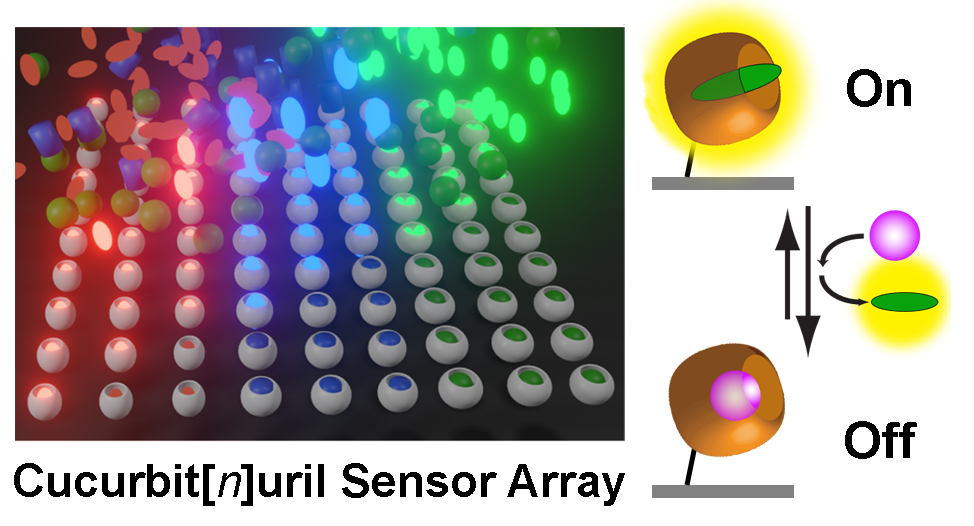
Cucurbit[n]uril-Immobilized Sensor Arrays for Indicator-Displacement Assays of Small Bioactive Metabolites
-
Author:
C. Zhong, C. Hu, R. Kumar, V. Trouillet, F. Biedermann, M. Hirtz
-
Source:
ACS Appl. Nano Mater. 4 (2021) 4676-4687
- Date: 2021
-
The patterned immobilization of chemosensors into nano/microarrays has often boosted utilization in diagnostics and environmental sensing applications. While this is a standard approach for biosensors, e.g., with antibodies, other proteins, and DNA, arraying is not yet adopted widely for supramolecular chemosensors which are still predominantly used in solution systems. Here we introduce the patterned immobilization of cucurbit[n]urils (CBn) into multiplexed microarrays and elucidate their prospects for the advancement of surface-bound indicator-displacement assays to detect small molecule analytes. The microarrays were generated by microchannel cantilever spotting of functionalized CBn and subsequent self-assembly of the corresponding indicator dyes from solution. Enhanced sensitivity of surface-bound microarrays was established in demonstrations with small bioactive metabolites (spermine, amantadine, and cadaverine) compared to bulk assays. Furthermore, the integration of the CBn/indicator microarrays into microfluidic channels provides an efficient route for real-time monitoring of the sensing process, allows easier handling, and reduces need for analyte volume. The concept was further extended to differential sensing of analytes on diplex or multiplex CBn/indicator microarrays, opening up a route for multicomponent sensing of small molecule analytes in complex liquids.
